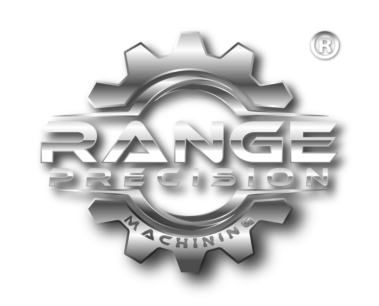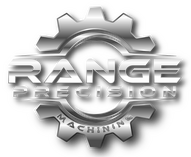Design for Assembly (DFA) revolutionizes manufacturing by focusing on simplifying parts and processes to streamline assembly, cut costs, and improve product quality. By aligning design principles with assembly needs, Design for Assembly DFA strategies helps manufacturers reduce component complexity, optimize assembly speed, and improve overall durability. This comprehensive approach has become indispensable in fields ranging from automotive to electronics, providing a competitive edge for companies aiming to optimize efficiency without sacrificing quality. Here, we explore the core principles of DFA, industry-tested strategies, and its profound impact on production processes.
1. Core Principle: Fewer Parts for Simpler, Faster Assembly
Reducing the number of parts in a product design can save significant resources. Fewer parts mean lower manufacturing costs, fewer potential failure points, and simplified assembly processes. Instead of multiple fasteners, clips, or complex interlocking pieces, products can be designed with multifunctional components that serve multiple roles, reducing assembly time. A simplified part count also allows for lower inventory costs, which, in high-volume production, can dramatically impact the bottom line.
Example in Practice: In consumer electronics, companies often integrate connectors or self-locating parts that streamline circuit board assembly, enhancing both speed and reliability.
2. Standardization of Components and Fasteners
Standardizing components and fasteners simplifies assembly by minimizing unique part requirements and reducing inventory complexity. By using interchangeable parts, manufacturers can also reduce the need for specialized assembly tools and training. This practice promotes design flexibility, which can be especially beneficial for companies producing multiple products with overlapping components.
Real-World Impact: The automotive industry has embraced standardized fasteners, reducing both part variability and assembly time while lowering training needs. This standardization can also simplify disassembly, improving end-of-life recycling processes.
3. Modularity for Increased Flexibility and Maintenance
Modular design allows manufacturers to create assemblies that are easy to assemble, test, and, if necessary, replace. Products designed as modules can often be assembled in parallel, reducing the total time needed for final assembly. This modularity extends product lifespan, allowing components to be replaced or upgraded without discarding the entire product.
Industry Example: In the aerospace sector, modular design allows maintenance teams to replace damaged or worn parts quickly, which keeps aircraft in service longer and ensures a more sustainable maintenance approach.
4. Automation Compatibility to Increase Production Efficiency
Design for Assembly (DFA) Strategies goes hand-in-hand with automation. When parts are designed for automated assembly, they often have self-aligning or symmetrical features to facilitate easy handling by robots. This minimizes human intervention and aligns with the high-speed demands of mass production, resulting in improved product consistency and cost savings. Automating repetitive tasks also reduces error rates and labor costs while improving worker safety.
Example: Many manufacturers in the automotive and electronics industries have implemented DFA to accommodate robotic arms, optimizing part orientation for smooth and efficient assembly.
5. Error-Proofing (Poka-Yoke) for Higher Quality Assurance
Error-proofing, or Poka-Yoke, ensures parts are designed to be installed only one way, minimizing the likelihood of assembly errors. This approach is particularly useful in high-volume production, where small mistakes can lead to costly defects or delays. Error-proofing mechanisms, such as asymmetrical shapes or keyed connections, help reduce assembly errors and improve overall quality.
Case Study Example: In appliance manufacturing, adding tabs or specific notches to connectors ensures they can’t be misaligned, enhancing assembly precision and preventing rework or returns.
6. Optimizing Part Symmetry for Faster Assembly
Using symmetrical parts allows for easier and faster assembly, as workers or robots don’t need to spend time orienting parts. Symmetrical designs eliminate the need for time-consuming orientation, speeding up assembly and reducing errors.
Application: In battery manufacturing, for instance, symmetrical parts are commonly used, allowing for smooth and efficient assembly in high volumes without frequent orientation adjustments.
7. Enhanced Ergonomics and Safety in Assembly Design
Ergonomics in DFA focuses on reducing repetitive movements, lifting, and manual adjustments during assembly. Components should be easy to handle, with considerations made for weight, grip, and access. This is especially important in manual assembly, where ergonomics can impact both worker health and efficiency.
Industry Impact: In electronic component manufacturing, small, easy-to-grip parts reduce strain on workers’ hands, leading to improved productivity and fewer repetitive strain injuries over time.
8. Designing for Sustainable Manufacturing
Sustainable DFA practices focus on minimizing waste by designing products that require fewer resources and can be easily disassembled for recycling. Using fewer, multifunctional parts means less material waste. When modular and standardized designs are combined with sustainable materials, manufacturers reduce their environmental impact while improving the product’s lifecycle.
Sustainability Example: Companies in the electronics industry have adopted DFA to facilitate disassembly, ensuring components can be easily recycled and reused, supporting a circular economy approach.
9. Effective Inspection and Quality Control Integration
Designing products that are easy to inspect as they are assembled allows for swift quality assurance checks. Features like accessible inspection points or standardized tolerances enable faster, more effective inspections. This ensures consistent product quality and allows for the early detection of defects, preventing costly post-assembly fixes.
Example in Practice: In the automotive industry, go/no-go gauges are used in assembly lines for quick dimensional checks, enhancing efficiency and product consistency.
10. Fostering Collaboration Between Design and Assembly Teams
Effective Design for Assembly (DFA) Strategies and practices require close collaboration between design and assembly teams from the early stages. Designers and engineers work together to ensure that components are easy to produce and assemble, fostering a streamlined workflow and enhancing overall product quality. Close collaboration can help identify and resolve potential assembly challenges early, leading to a smoother production process.








